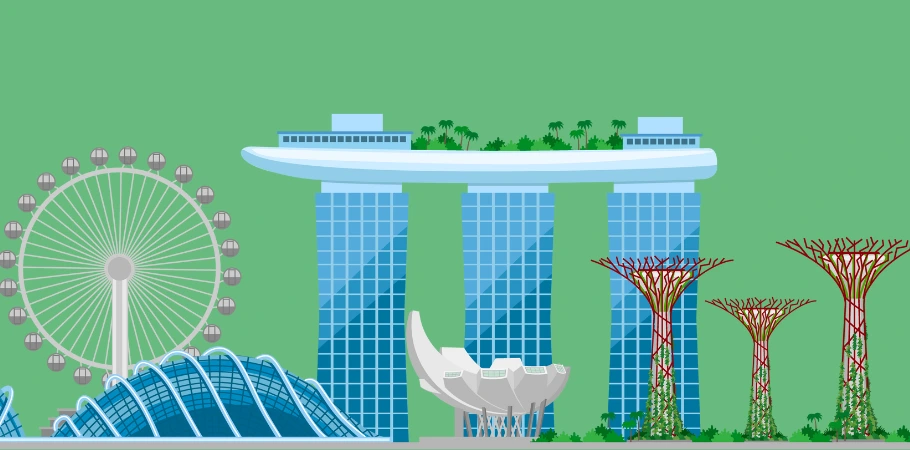Green technologies have undergone significant change and are now a key component of sustainable development. The many aspects of green technology, a field essential to addressing environmental issues and promoting a better future, are examined in this article. We discover the breakthroughs guiding our world towards sustainability by exploring the nature, kinds, potential, and difficulties of these technologies.
Green technologies: what are they
Innovations aimed at improving the environment and conserving resources are often referred to as green technology. They include eco-friendly materials, cutting-edge waste management techniques, and renewable energy sources like solar and wind.
Their dedication to sustainability, which aims to reduce ecological footprints, save resources, and improve energy efficiency, is at the heart of their design. These technologies represent a dramatic departure from conventional methods and a move toward sustainable alternatives in the fight against global environmental issues including resource shortages and climate change.
Additionally, green technologies represent a paradigm shift in economics and industry. By questioning established company models and encouraging sustainable business practices, they provide fresh chances for expansion and improvement. The growth of green tech companies and investments in sustainable ideas are clear indicators of this change.
Green technology adoption is not without its difficulties, though. Their development and use are still severely hampered by problems including exorbitant upfront expenditures, technical constraints, and legal restrictions. Notwithstanding these obstacles, the unrelenting development and use of green technology points to a bright future.
Read also: How Green Technology Is Helping Fight Climate Change
Which Green Technology Types Are There
In 2024, green technology will take several forms and address many facets of sustainability.
Leading the way in energy production are renewable energy technologies like wind and solar power, which provide substitutes for fossil fuels.Greenly draws attention to the growing significance of various energy sources. Technologies for energy efficiency, which aim to lower energy usage in companies and buildings, are also essential.
Electric cars and environmentally friendly public transportation systems are two examples of green transportation technology that are becoming more popular. Additionally, waste management technologies are transforming trash management by converting it into energy or sustainable resources. Furthermore, there exist green fuels, which are fuels made from plant and animal sources.
Finally, in the building sector, sustainable materials are taking the place of conventional, non-renewable ones. These many technological kinds highlight the all-encompassing reach they may have in tackling environmental issues.
Green technology opportunities
The possibilities that green technology provide are numerous. According to Apptension, they boost the economy by opening up new markets and generating employment. Additionally, by encouraging corporate innovation, these technologies help firms create new goods and services that satisfy the rising demand for sustainability from consumers.
In terms of the environment, green technologies greatly lower resource use and carbon emissions, aiding in the battle against environmental degradation and climate change. Socially, they raise living standards by giving people access to better water and air.
They also provide a way to accomplish national sustainability goals on a global scale. These chances have the potential to boost the economy and pave the way for a more just and sustainable society.
Read alos: 6 Ways Green Energy Storage Technology is Changing
Difficulties with Green Technologies
Despite their potential, green technologies encounter a number of obstacles. One of the technical concerns is the requirement for ongoing innovation to increase efficacy and efficiency. The hefty upfront expenses associated with green technology might be a financial deterrent. Achieving broad acceptance and integration into current infrastructures and systems presents additional difficulties.
Regionally specific regulatory barriers may prevent certain technologies from being developed and used. Furthermore, widespread implementation still depends on public knowledge and acceptability.The Sustainable Review emphasizes the need of involvement and education in dispelling myths and overcoming change-averseness. For green technology to be successfully integrated and their promise to be fully realized, several issues must be resolved.
2024's Top Green Technology Innovations
A number of ground-breaking developments will define the green technology scene in 2024. One notable breakthrough is in the field of solar energy, where developments have produced more cost-effective and efficient solar panels, opening up access to renewable energy sources like solar energy to a wider range of people. Electric vehicle (EV) technology is another field that has seen significant advancements. Because of advancements in battery life and charging infrastructure, EVs are becoming increasingly widely used.
Technologies for waste management are also evolving. More sustainable resource management is made possible by advancements in recycling and waste-to-energy technologies. Both greenhouse gas emissions and landfill garbage might be decreased by these technology.
Furthermore, sustainable structures with low environmental impact and energy efficiency are becoming more and more popular, a trend known as green architecture. By using sustainable materials and incorporating energy-efficient lighting and green roofs, these buildings greatly improve urban sustainability and reduce temperatures in nearby regions.
Sustainable farming technology are developing in the agriculture industry. Food production is undergoing a transformation because to methods like precision farming, which makes use of artificial intelligence (AI) and the Internet of Things (IoT) to use resources efficiently. This approach makes food production more environmentally friendly and sustainable.
These instances highlight how dynamic and significant green technology are. In addition to changing sectors, they are clearing the path for a future that is more environmentally friendly and sustainable. In order to handle the contemporary global environmental concerns, these technologies must continue to evolve and be used.

